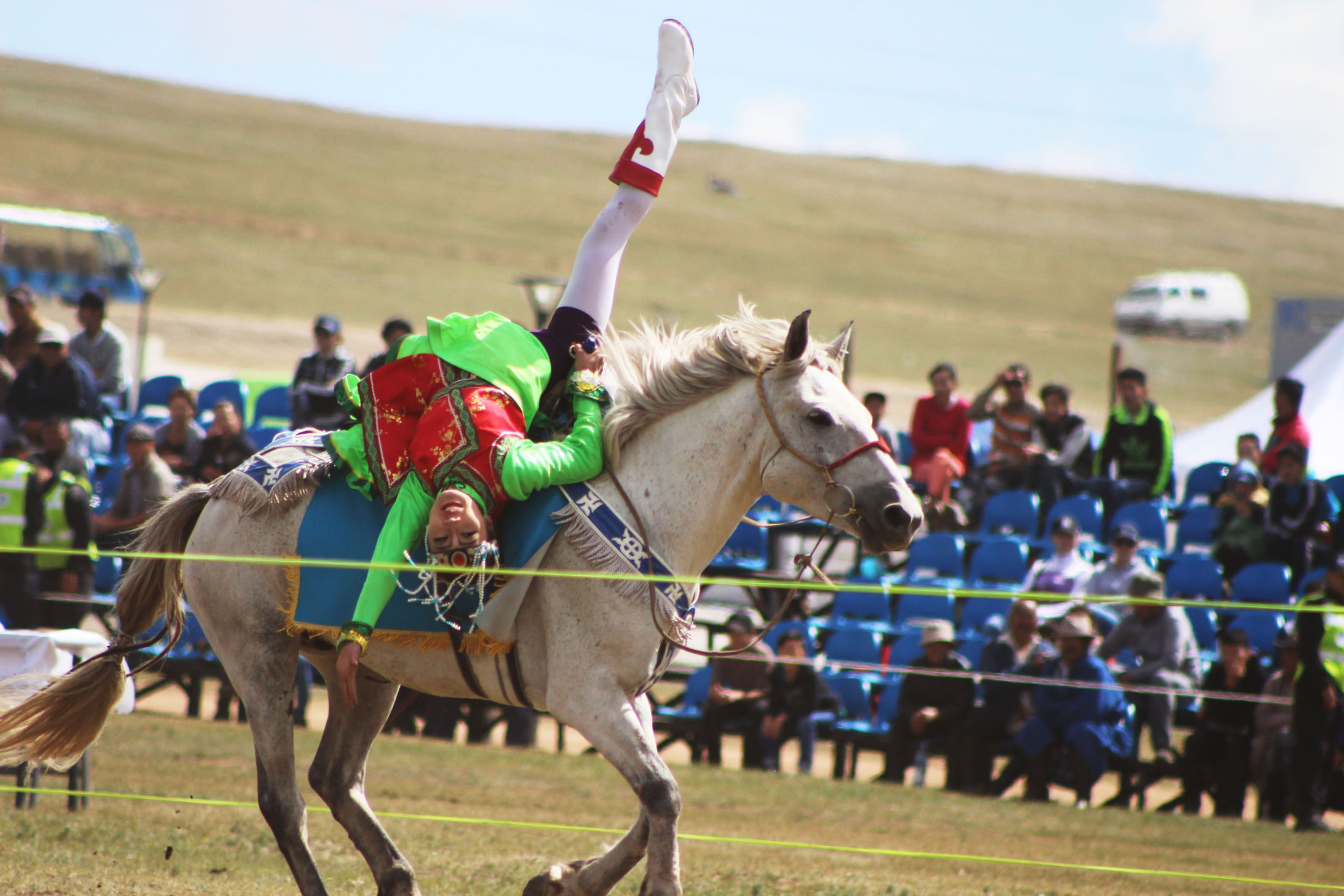
Mongolian Horse culture Mongolian history and culture is inextricably linked to the horse. Many thousand years ago the Human tamed the horse in the steppe for the first time, a big step in human civilization. It is difficult to imagine the nomads’ life and history without horses; the horse was the speed and the speed was the power. The Horse was the one of main factors for the success and power of the Mongolian. During Chinggis Khan’s conquests, stirrup and trousers introduced to the world and after that time became widespread around the world. Also, Mongolian cavalry carried advanced Chinese technology to the western world, which was a big influence to the Renaissance, gun powder being a significant example. Nomadic children learn to ride as soon as they can walk. Then they can help their parents with herding sheep and goats and cows.
Now, Mongolia is possibly the most equestrian nation in the world. During Naadam, an annual celebration of the three manly sports including horse race, wrestling and archery, thousands of horses are gathered for racing. The race distance ranges from 15km-30k. Jockeys are between 5 and 12 year old boys and girls. There are 6 categories of races depending on the horse's age; from 1year old (Daaga) to 5year old horse (Ih Nas). Almost 500 horses race at one time (once it reached one thousand). The first five horses are winners. Winning is called Airagdah in Mongolian, to get Airag (Airag is fermented mare’s milk, the national beverage of Mongolia). This gives them honor and praise and is part of folk art. Before the Naadam each province’s men gather to choose the leader of their group. In Mongolian group is Gal (fire). Most Gal’s leaders are the eldest people chosen by their younger members. Then they start training the horses, using their special training method which is passed on from generation to generation.
Mongolian language is imbued with the horse culture. For instance horse references are found in terms of respect for welcoming someone, such as “have you ridden well?” Also when nomads they want to go to toilet, they simply say they are “going to see my horse.” Unlike westerners, Mongolians don’t give names to their horses. They consider it enough to distinguish them by their colour. There are around 300 names of colour which are used just for horse identification. Their vocabulary is so precise in terms for nuances of a horse’s coat that despite the number of horses in vicinity, there is never confusion about which horse is being discussed. Mongolian style of riding is different from western styles. Mongolians carry their reins in one hand and stand up in short stirrups .The tack is different as well. The traditional Mongolian saddle is wooden and has changed little over centuries. It has a high pommel and cantle and is adorned with silver decoration (Baavar) and fancy material. The bridle is simple and made by cowhide. Nowadays some people use a hybrid of Russian and Mongolian saddles, but people use their traditional fancy decorated ones at the special occasions such as Naadam and Tsagaan Sar (the Lunar New Year). Mongols invented many kind of musical instruments, one of them is horse-head fiddle, known as the Morin khuur. It has two strings, made from horse tail, with the distinctive and decorative carving of a horse head on top. The sound of morin khuur is like horse and it often accompanies the unique long songs which regale the beauty of the countryside and relive tales of nomadism.
